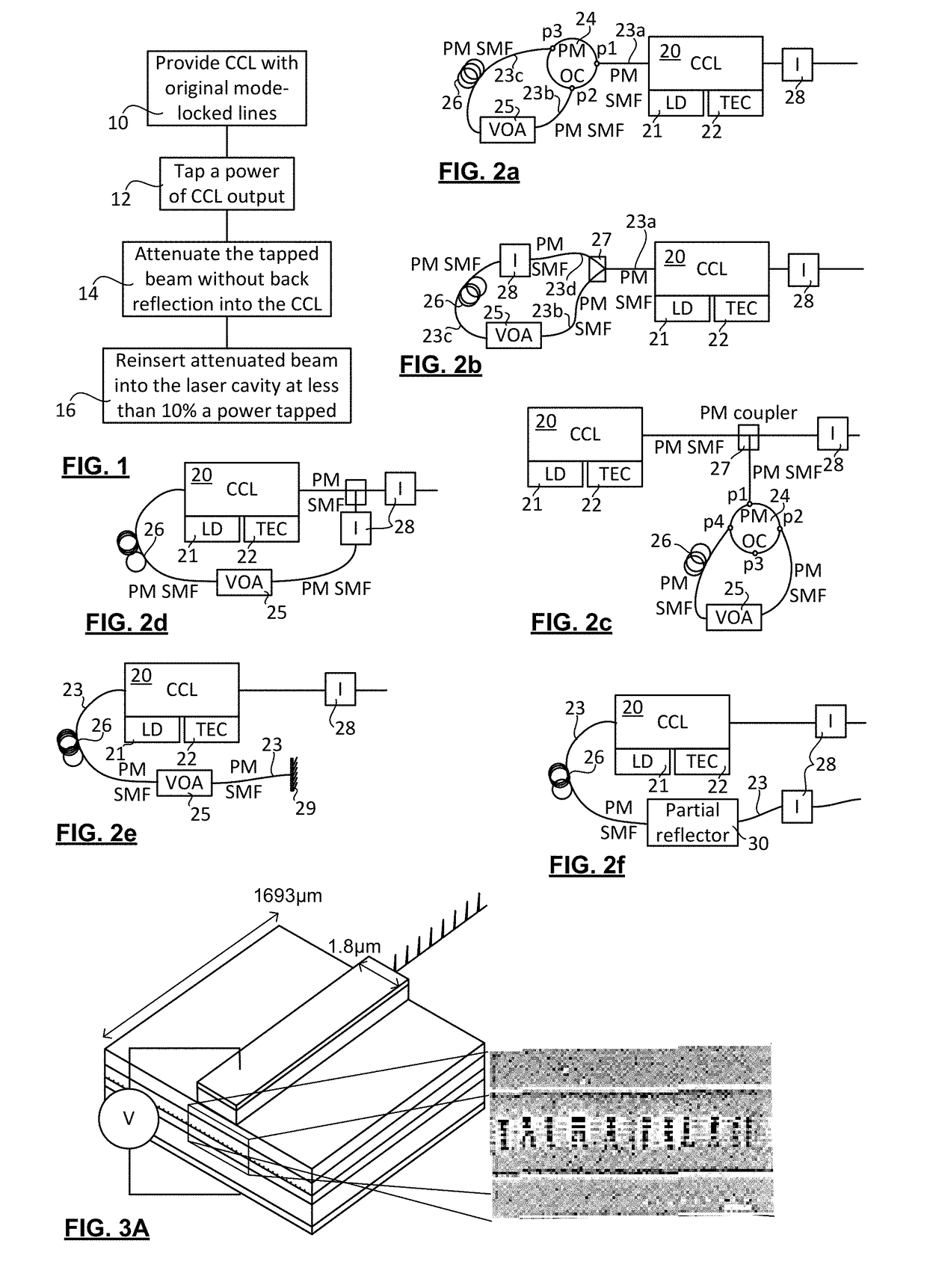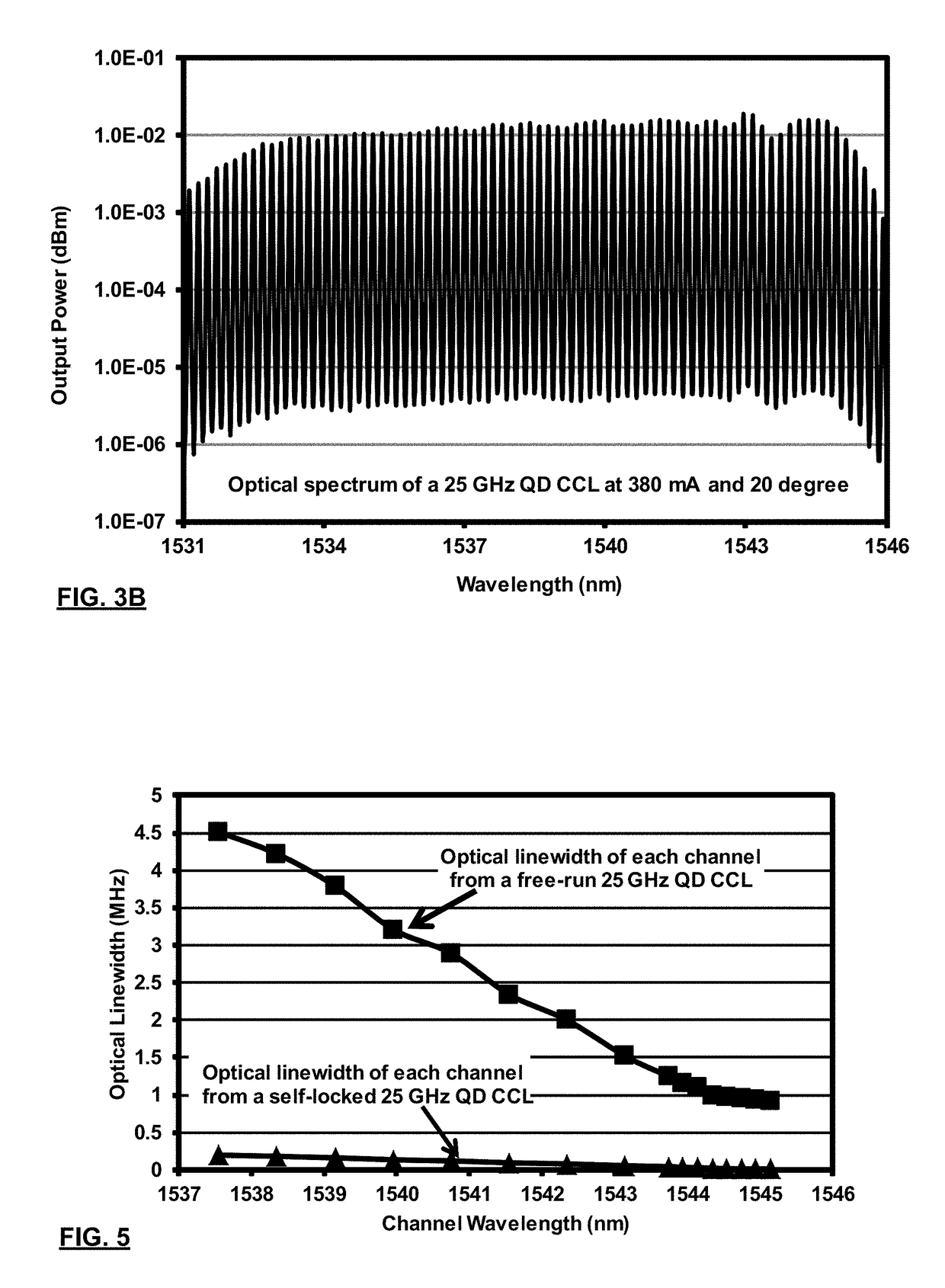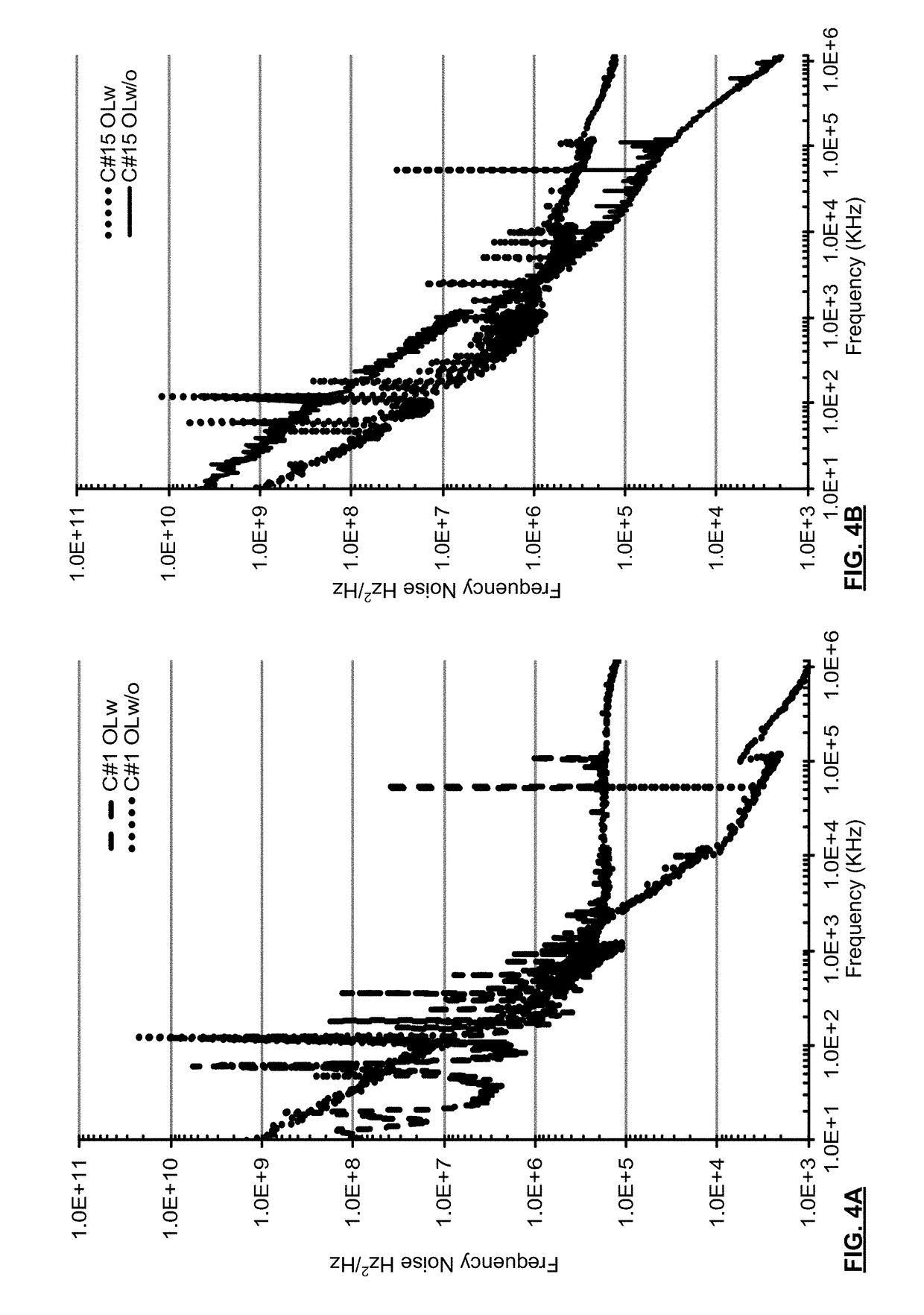Stable Linewidth Narrowing Of A Coherent Comb Laser
a comb laser and linewidth narrowing technology, which is applied in the direction of laser details, laser optical resonator construction, semiconductor lasers, etc., can solve the problems of reduced signal quality of non-coherent modulation schemes, limited number of spectral carriers, and complex setups with discrete components. , to achieve the effect of improving stability, low cost and efficiency
- Summary
- Abstract
- Description
- Claims
- Application Information
AI Technical Summary
Benefits of technology
Problems solved by technology
Method used
Image
Examples
examples
[0066]FIG. 3A is a schematic illustration of the InAs / InP Quantum Dash CCL used for the demonstration of the linewidth narrowing with a secondary cavity. The InAs / InP QD CCL was grown by chemical beam epitaxy (CBE) on exactly (100) oriented n-type InP substrates. The undoped active region of the QD sample consisted of five stacked layers of InAs QDs with In0.816Ga0.184As0.392P0.608 (1.15Q) barriers. The QDs could be tuned to operate in the C- or L-band using a QD double cap growth procedure and a GaAs sublayer [27-28]. In the double cap process the QDs are partially capped with a thin layer of InP, followed by a 30 second growth interruption and then complete capping with the 1.15Q barrier material. A thickness of the partial cap controls a height of the QDs, and hence their emission wavelength, and is also narrows the height distribution of the QDs, resulting in a narrower 3-dB gain spectrum. The thin GaAs sublayer promotes dash rather than dot growth. This active layer was embedde...
PUM
 Login to View More
Login to View More Abstract
Description
Claims
Application Information
 Login to View More
Login to View More - R&D
- Intellectual Property
- Life Sciences
- Materials
- Tech Scout
- Unparalleled Data Quality
- Higher Quality Content
- 60% Fewer Hallucinations
Browse by: Latest US Patents, China's latest patents, Technical Efficacy Thesaurus, Application Domain, Technology Topic, Popular Technical Reports.
© 2025 PatSnap. All rights reserved.Legal|Privacy policy|Modern Slavery Act Transparency Statement|Sitemap|About US| Contact US: help@patsnap.com



